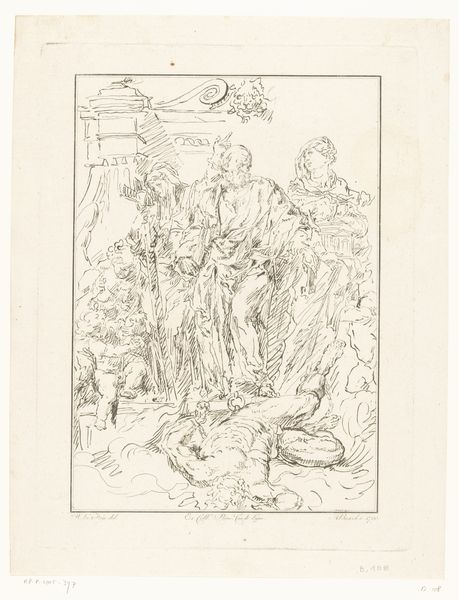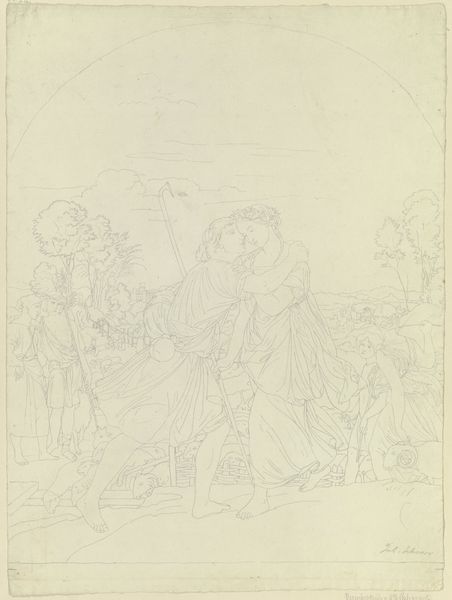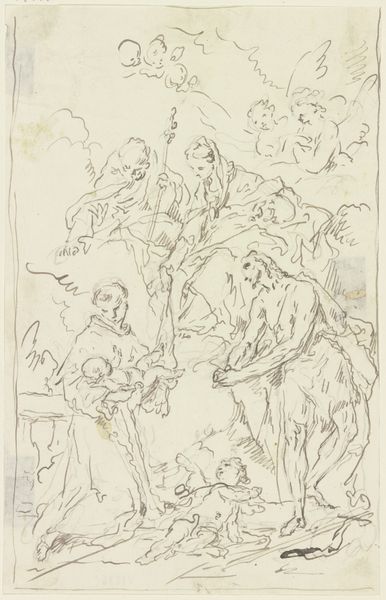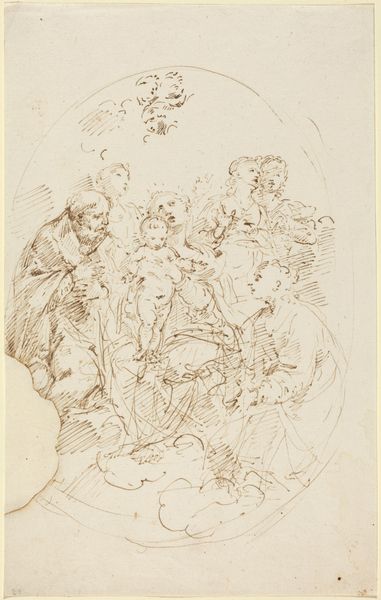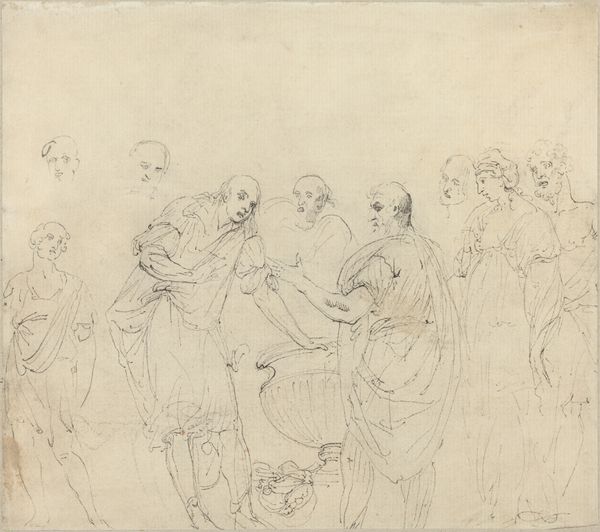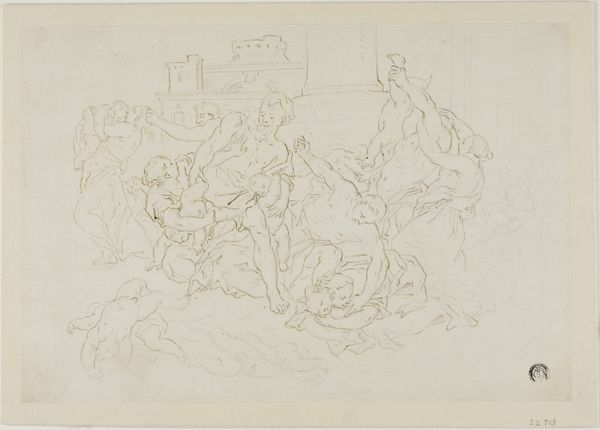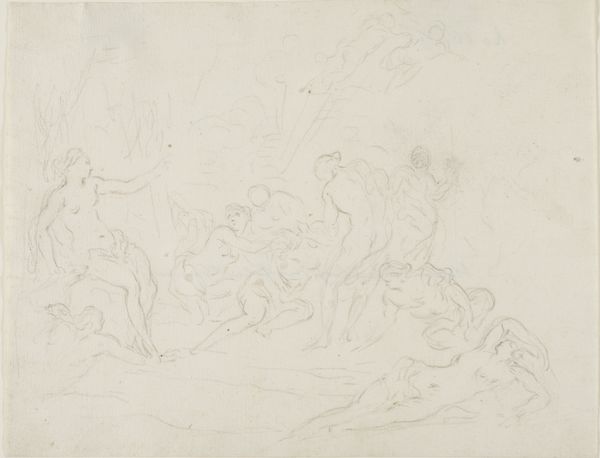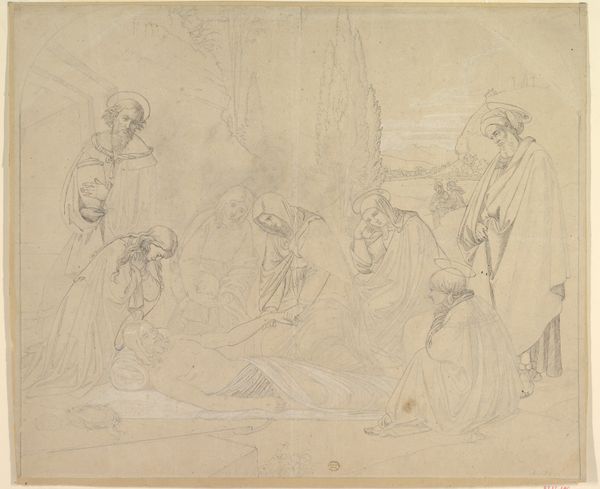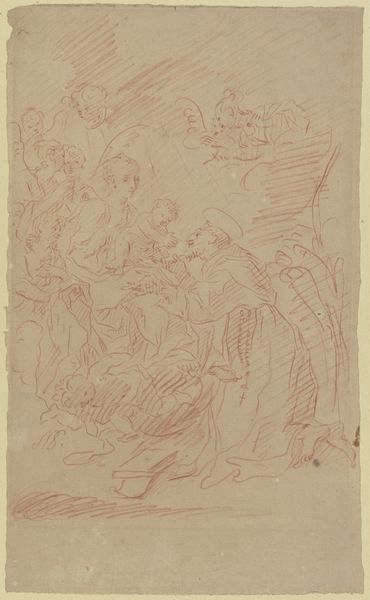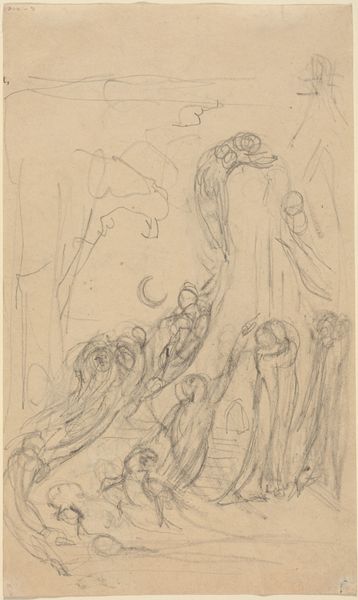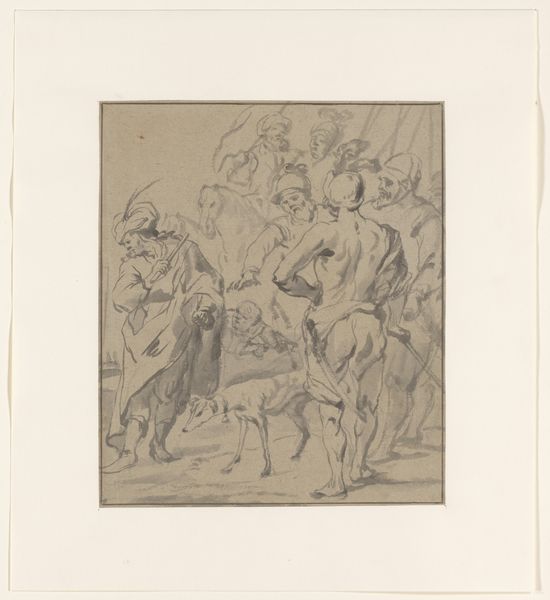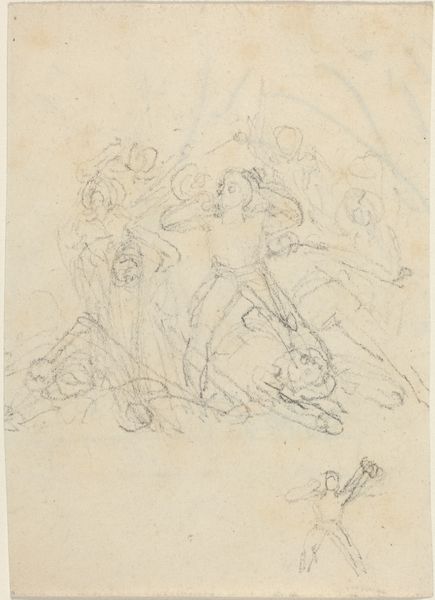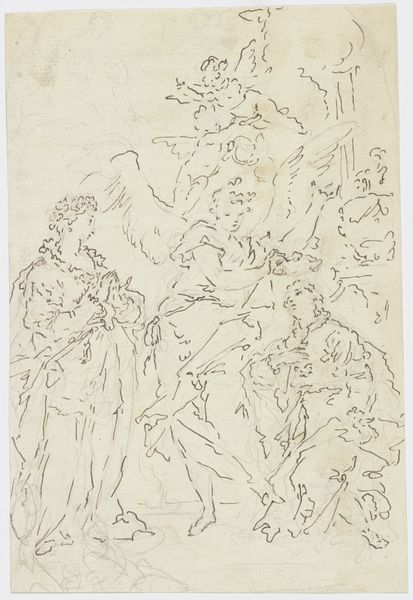
drawing, paper, pencil
#
drawing
#
light pencil work
#
quirky sketch
#
baroque
#
pencil sketch
#
figuration
#
paper
#
personal sketchbook
#
sketchwork
#
ink drawing experimentation
#
pen-ink sketch
#
pencil
#
sketchbook drawing
#
history-painting
#
storyboard and sketchbook work
#
sketchbook art
Dimensions: height 387 mm, width 294 mm
Copyright: Rijks Museum: Open Domain
Curator: Here we have Leonaert Bramer's "The Descent from the Cross," a drawing created sometime between 1642 and 1653. It resides here at the Rijksmuseum. What's your first take on this piece? Editor: It’s striking how light it feels, considering the subject matter. The delicate pencil work gives it an almost ethereal quality, a quiet moment amidst the chaos. Curator: It is interesting, isn’t it? Bramer lived through a turbulent period, the Eighty Years' War looming large. These biblical scenes gained considerable cultural resonance. This sketch hints at a grander composition, doesn’t it? Bramer wasn't just illustrating a bible story, he was reflecting anxieties, resilience. The public role of art became crucial. Editor: Absolutely. Think of the Deposition scene, Christ’s body taken down. Over centuries, it becomes so deeply ingrained, resonating with grief, sacrifice. The positioning, the figures surrounding Christ–it all calls upon layers of established meaning. What is particularly telling in this sketch is that the figures barely seem to be touching the body, or one another for that matter, which might give us another way into Bramer's intentions in representing this particular biblical scene. Curator: The absence of color contributes to this sense of removal. In Bramer’s time, art patronage was shifting. The merchant class, increasingly powerful, had distinct aesthetic preferences. These more modest pencil works became valuable and were popular ways to create many studies for larger artworks. The scale hints at a study; perhaps it's linked to his larger history paintings. Editor: And that's precisely where it becomes intriguing. We see, repeated again and again, this single scene depicting not just the body of a person but the corporeal body of God rendered through visual vocabulary—what is consistent and inconsistent throughout different presentations? What specific message about humanity might we learn from examining this body? Curator: That's a great question. By understanding Bramer's time, and that visual language of sorrow, sacrifice, it lets us grasp how artwork truly becomes a vessel, capturing social consciousness. It makes a piece from centuries ago feel, somehow, utterly current. Editor: Exactly, and perhaps a personal interpretation. Looking at those faces etched with emotion. It's almost a memory made visual, open for interpretation today, much like then.
Comments
No comments
Be the first to comment and join the conversation on the ultimate creative platform.
